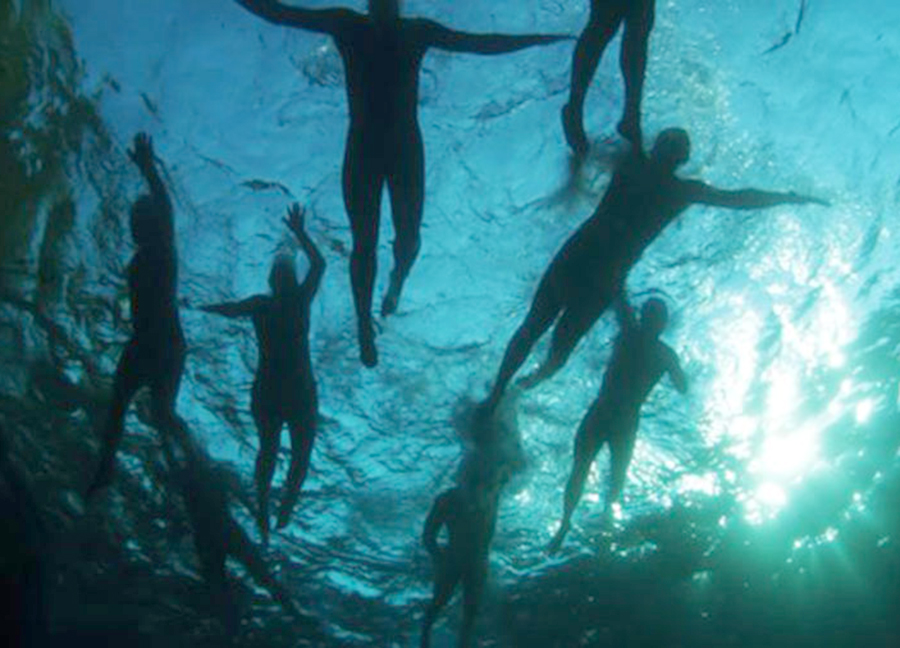Yakona treads water with worn message
Nature documentaries on film take on a new life due to the much higher quality of the image available with film budgets. Your run-of-the-mill Discovery Channel feature about the Serengeti pales in comparison to films like March of the Penguins or Chimpanzee, where the quality of the image brings the nature to life in a way that the limits of the small screen simply cannot. Yakona, the new documentary about the San Marcos River in Texas, continues that tradition. It is visually stunning. Following the river from prehistoric times until now, the film tries to recreate the river’s-eye view of its interactions with humans. Yet despite the striking visuals, the film fails to really show why we need it.

Go with the flow · Yakona focuses on the history of the San Marcos River in Texas, showing scenes from prehistory up to modern day. – Photo courtesy of Yakona.org
The film has no narration, and the only dialogue appears when there are people near the river speaking. This gives the film a very atmospheric feel, but it also makes for difficult watching. The series of shots float by lazily while the viewer fights to piece them all together without any sort of help from directors Paul Collins and Anlo Sepulveda.
The first section of the movie feels like an extended cut of one of Terrence Malick’s many nature image interludes in The Tree of Life. There is an extended shot of organisms multiplying underwater, followed by a shot of the sun. We then see prehistoric people fishing in the river, but there isn’t much action here. The film is set up in a sort of vague chronological order in that it begins with simple organisms and prehistoric humans and ends with the state of the river today. As if the murkiness that arises from the lack of narration wasn’t enough, however, Yakona also sometimes jumps around in time while making its way from loincloths to loudspeakers.
While flowing along the river’s history, the film touches on many familiar notes. It shows the struggle between white settlers and Native Americans. We are shown a white man crossing the river toward some natives holding a wooden cross. Later, in one of the most returned-to scenes in the film, a battle between what appeared to be some trigger-happy, manifest destiny-driven surveyors and a group of Comanche warriors plays out on the banks of the river. The obligatory shot of blood turning the river red is included. The side taken by the film is not surprising considering the name of the film: Yakona is the Coahuiltecan word for “rising water.” The decimation of the Native Americans by European settlers is a dark stain on American history; there is no denying that. Nevertheless, it has also not been ignored. It has been well-covered, with much more nuance and thoughtfulness, than Yakona’s brief showing of it does.
Another overplayed theme is the effects that humans have had on the river. There is an extended look at a now-closed water park that used to operate in a different part of the river. Grainy footage of the park back when it was open is juxtaposed with images of the park now overrun with vines and partially underwater. Later on, submerged pieces of water park are removed with cranes while a generic politician makes a speech about conserving and renovating the river. The environmental message isn’t hammered away with quite the same feverishly explicit imagery as blood floating in water, but it is there and, again, its handling is disappointing. Nothing new is said or shown. Most people who will take the time to watch a one-and-a-half-hour film about the history of a river know that the presence of humans near a river, or other natural formation, will have some adverse environmental effects one way or another.
The film isn’t entirely populated by dreamy, slow-motion images of the river and its wildlife or images evoking legitimate, but well-worn, social criticisms. There are also some lovely images of fireworks over a riverside carnival and others of people frolicking in a calm part of the river. The intention seems to be to depict the river in its highs and lows, showing the terrible things that have happened near the river alongside the joy it has brought many. It is an interesting approach — and the most objective one — but it doesn’t make for an especially interesting film. The striking images have their appeal, and some are pretty memorable. An extended shot of a snapping turtle holding onto the foot of an unfortunate bird while the bird tries to shake free to return to air and life was a high point. The rest of the film, however, has few others. As the slow scenes are methodically dropped one by one in front of the viewer without much explanation or order it is hard to maintain focus. Perhaps one needs more than just a random river’s point of view to make a compelling film. Or, perhaps it is this film’s overreliance on a series of impressionistic images instead of any actual direction that sinks it under its own slowly moving waters.

